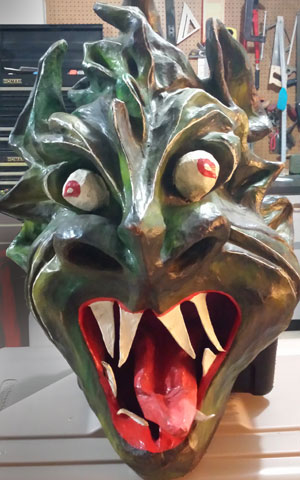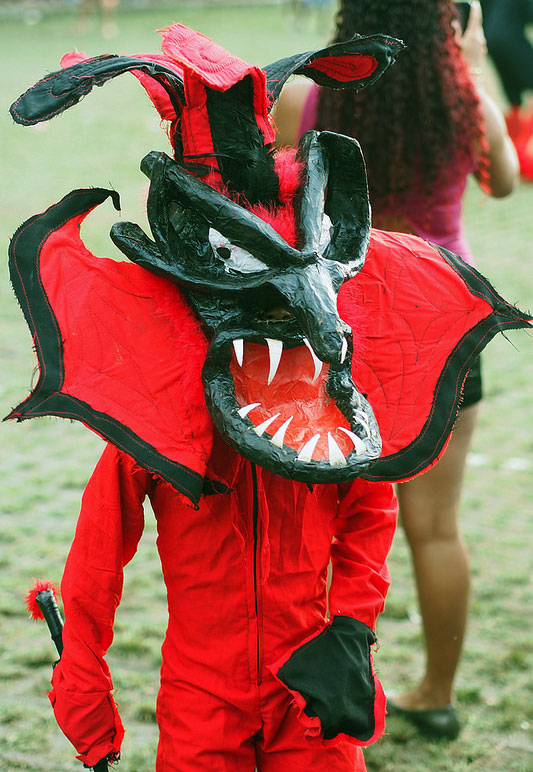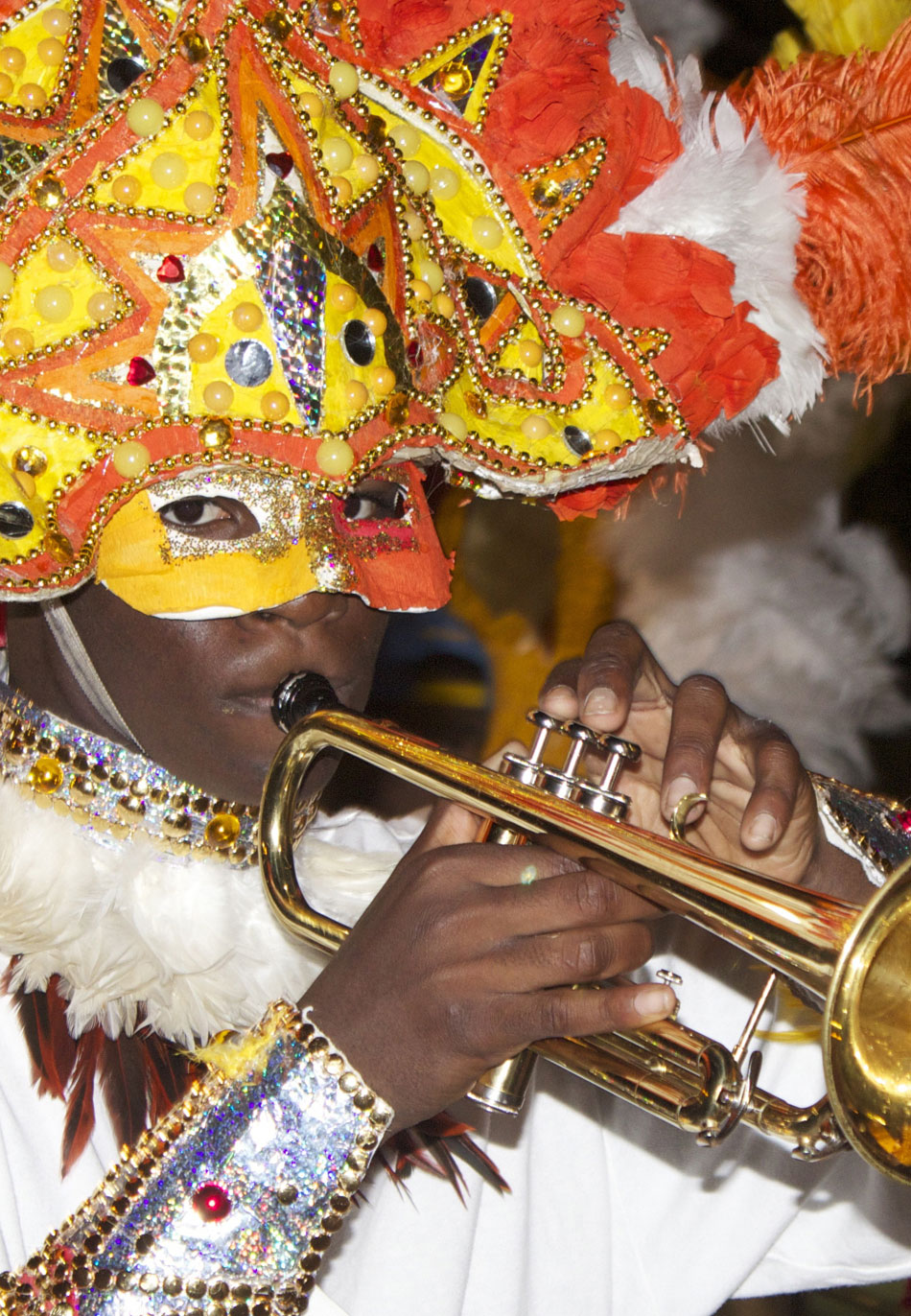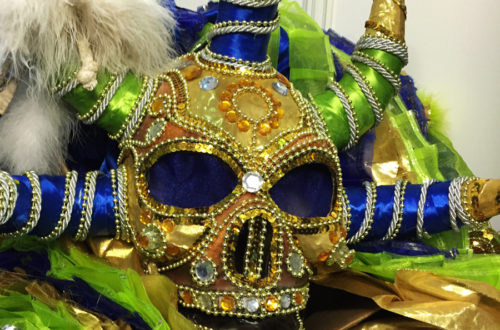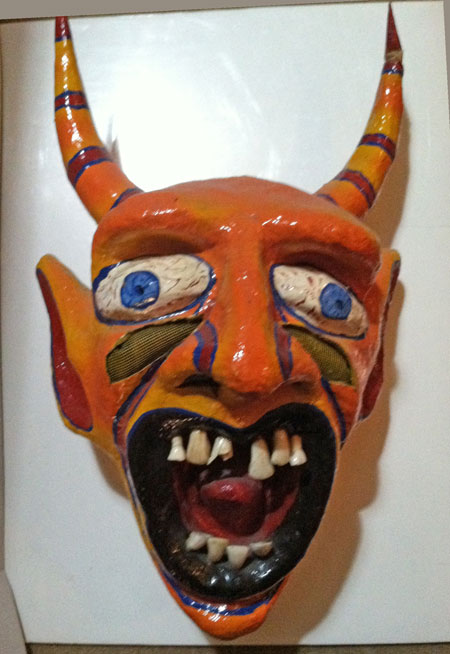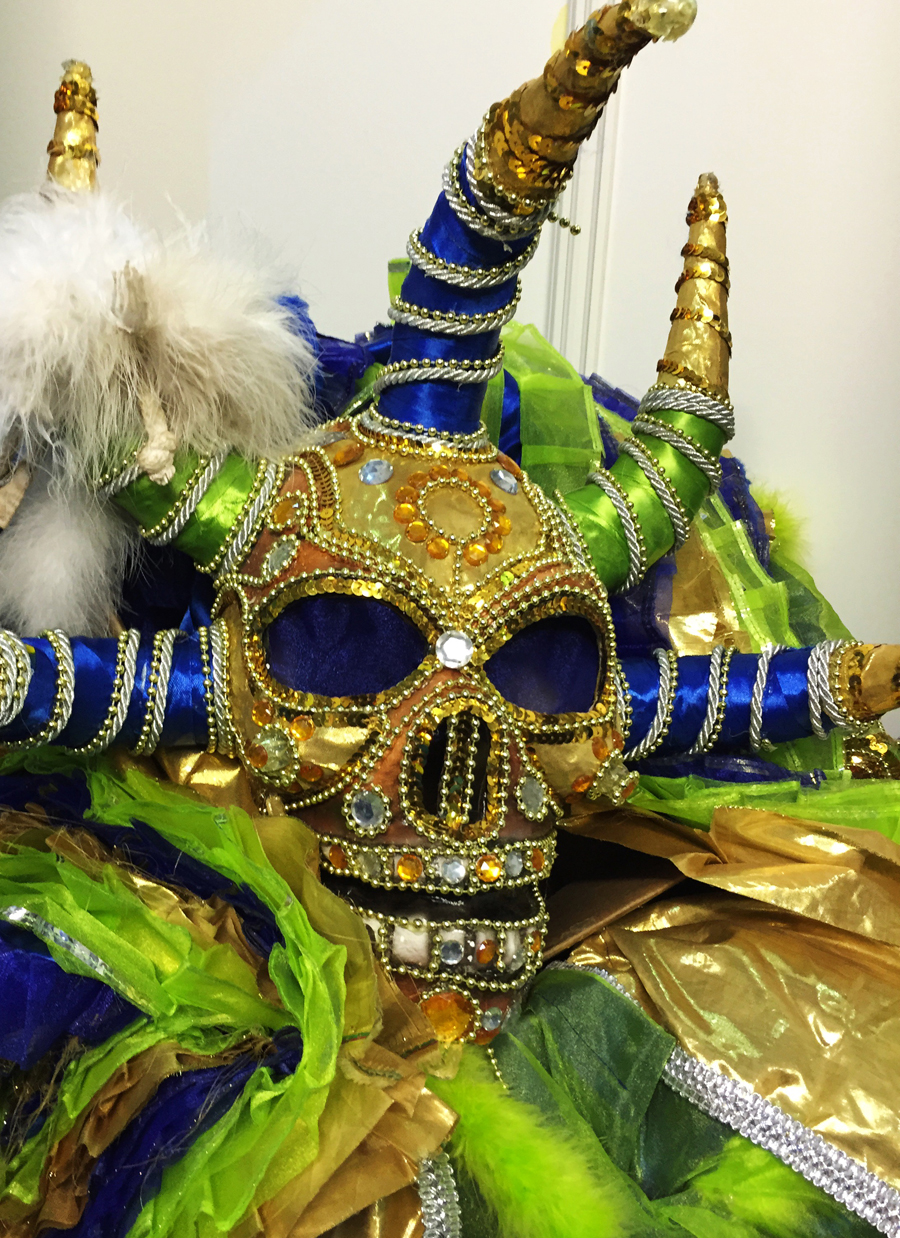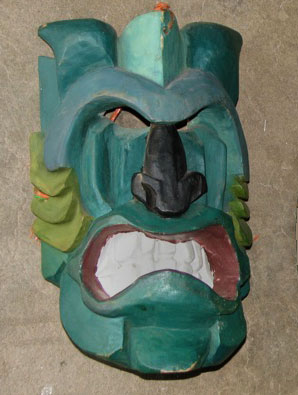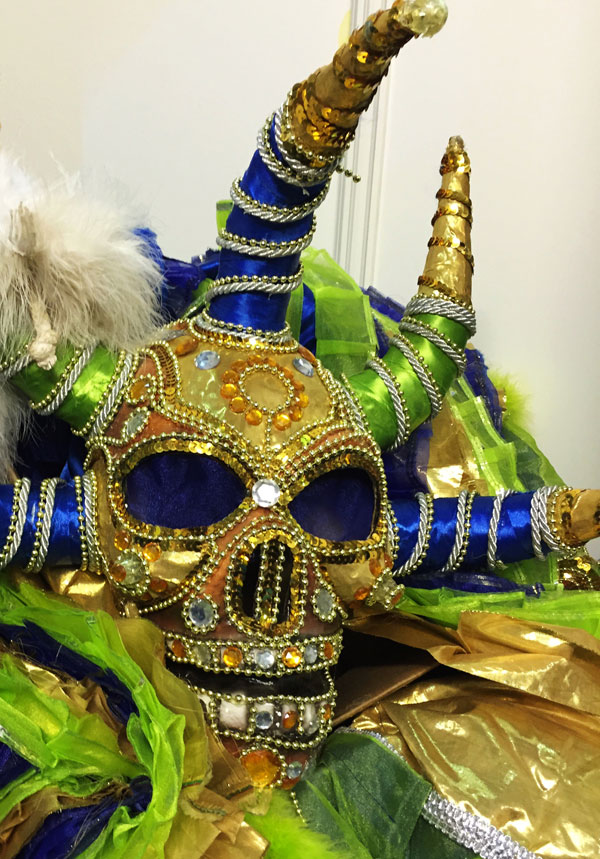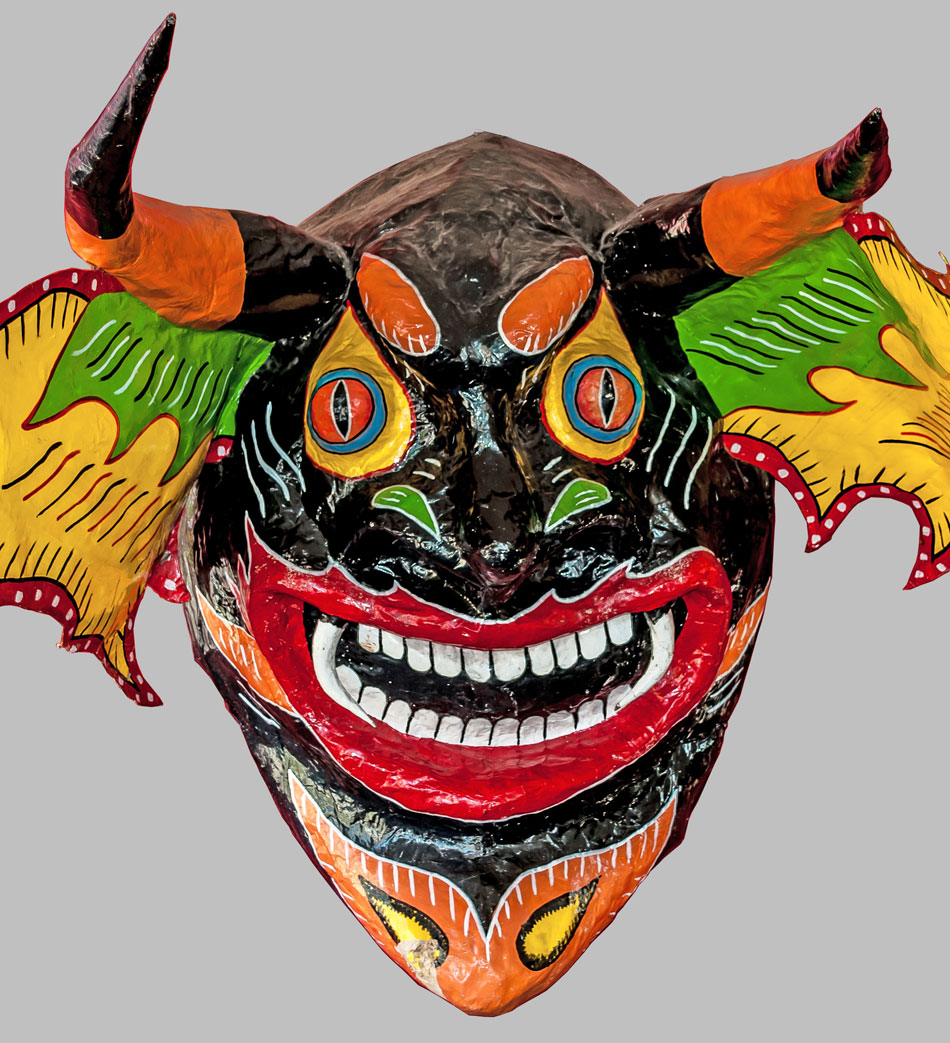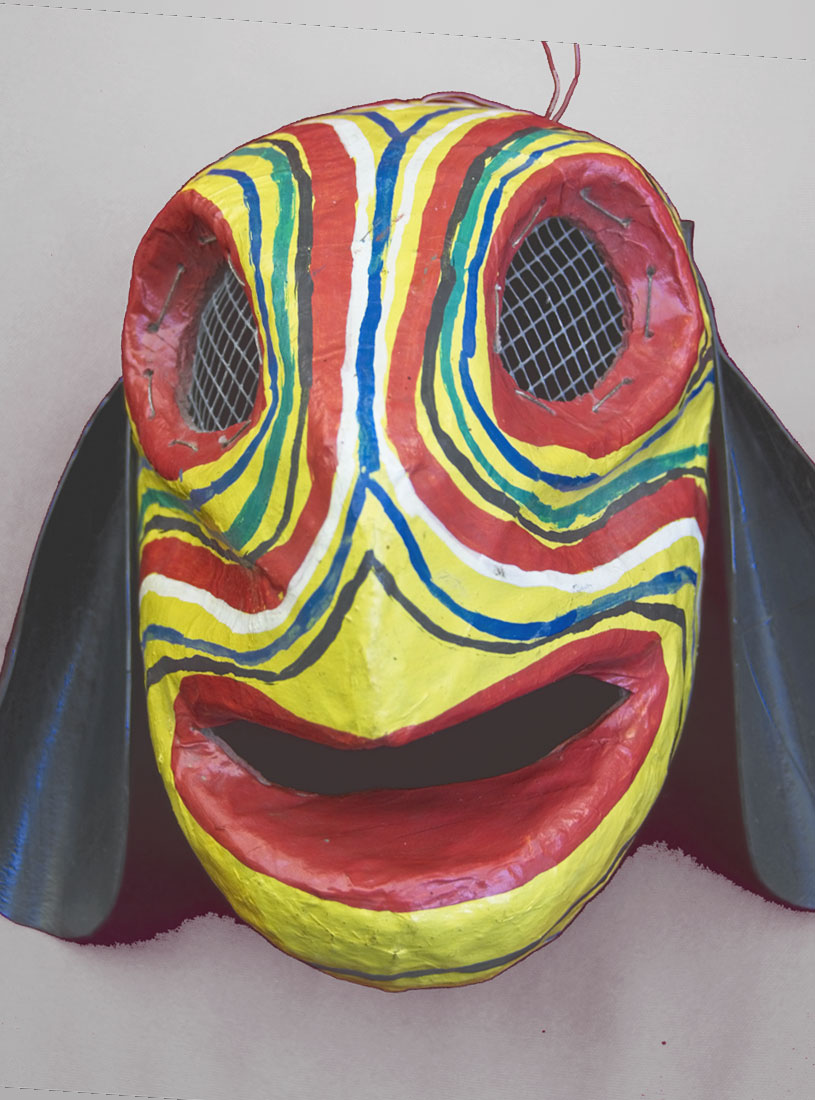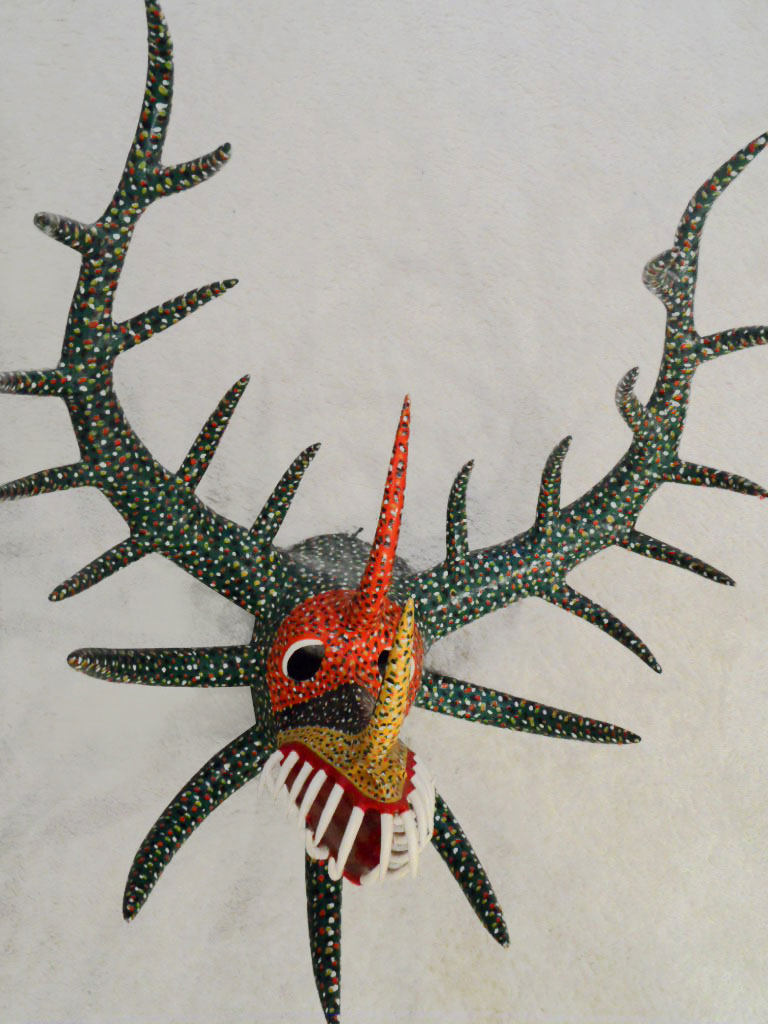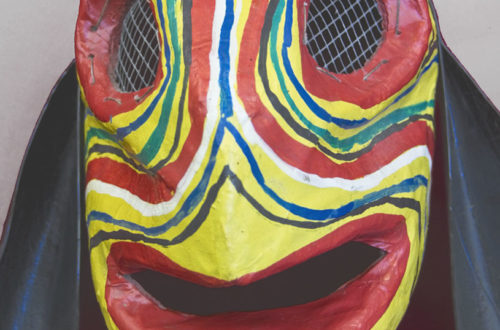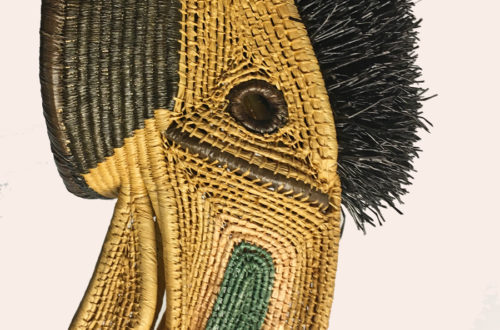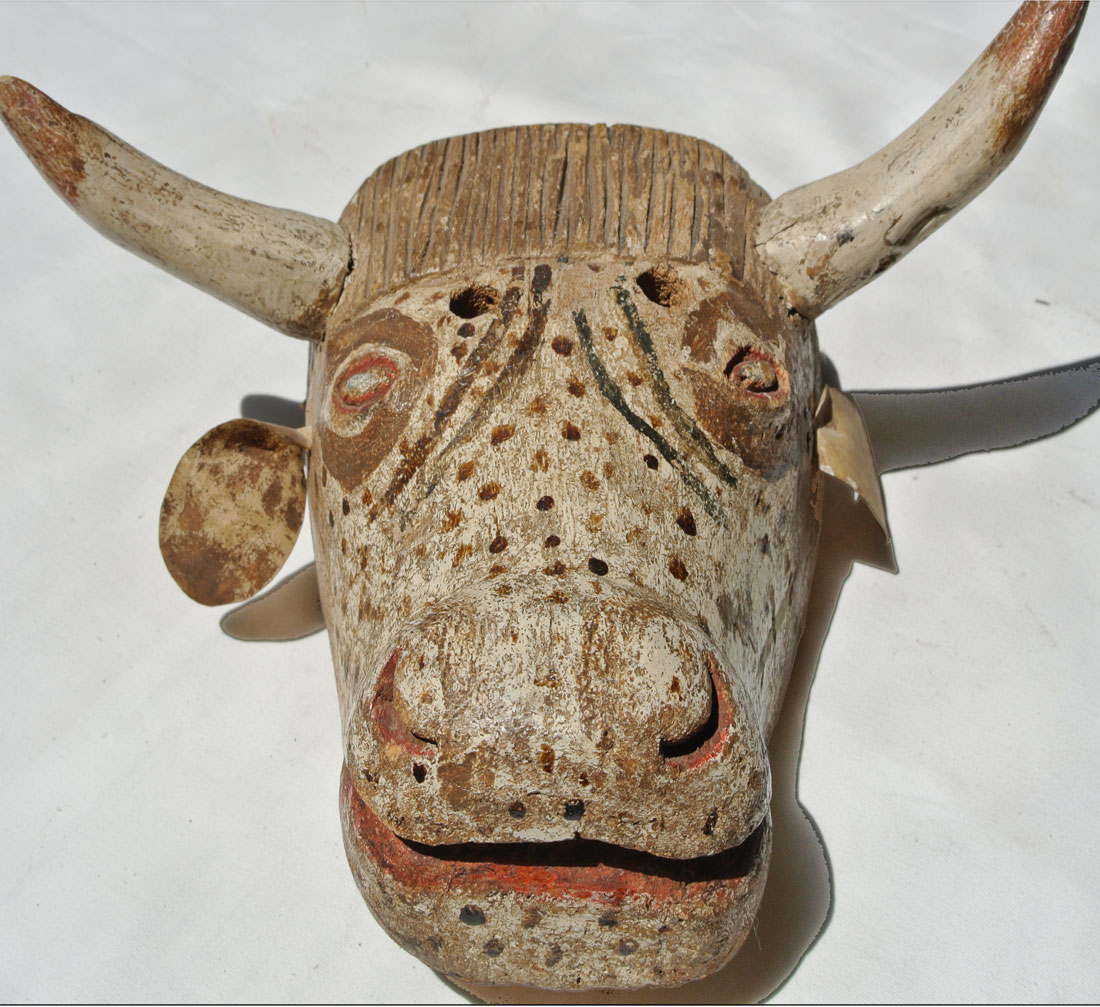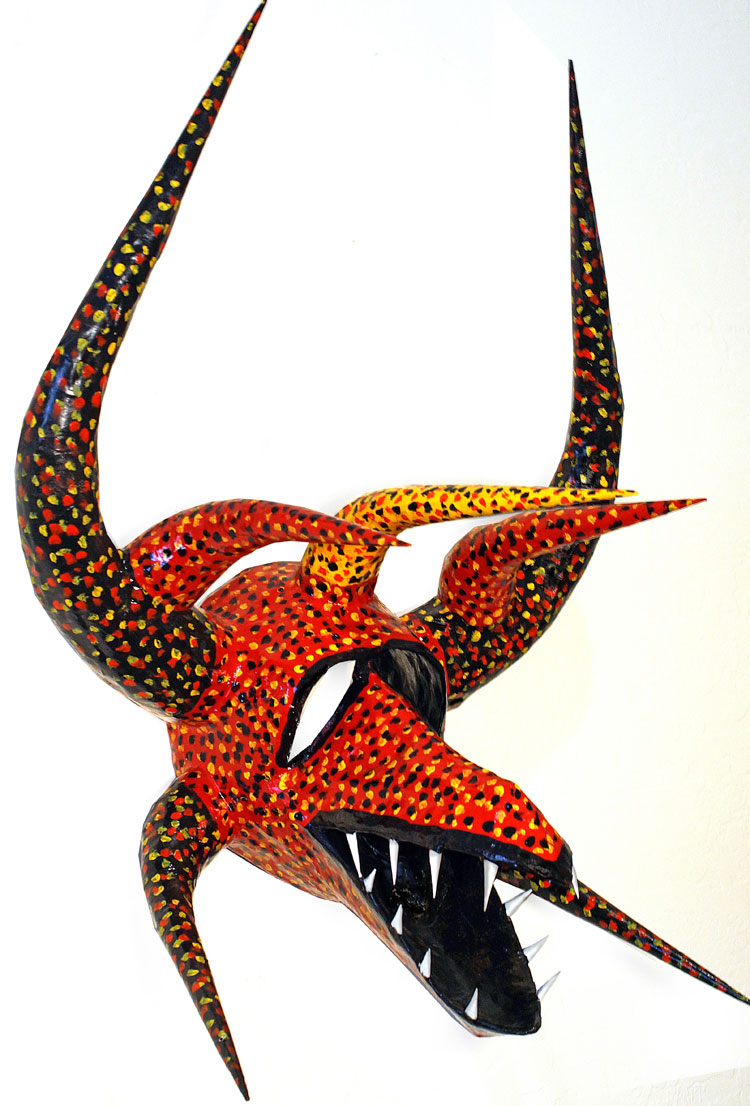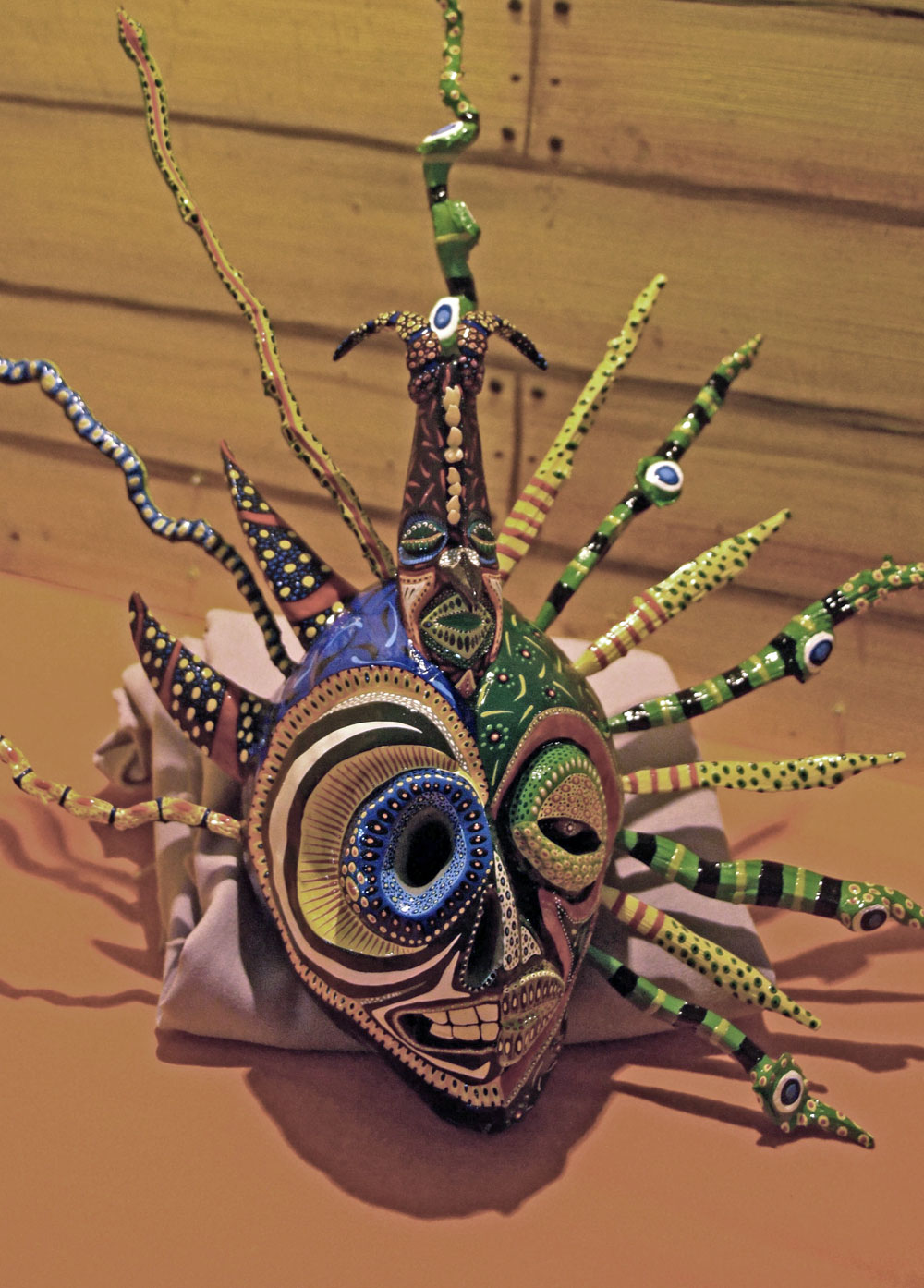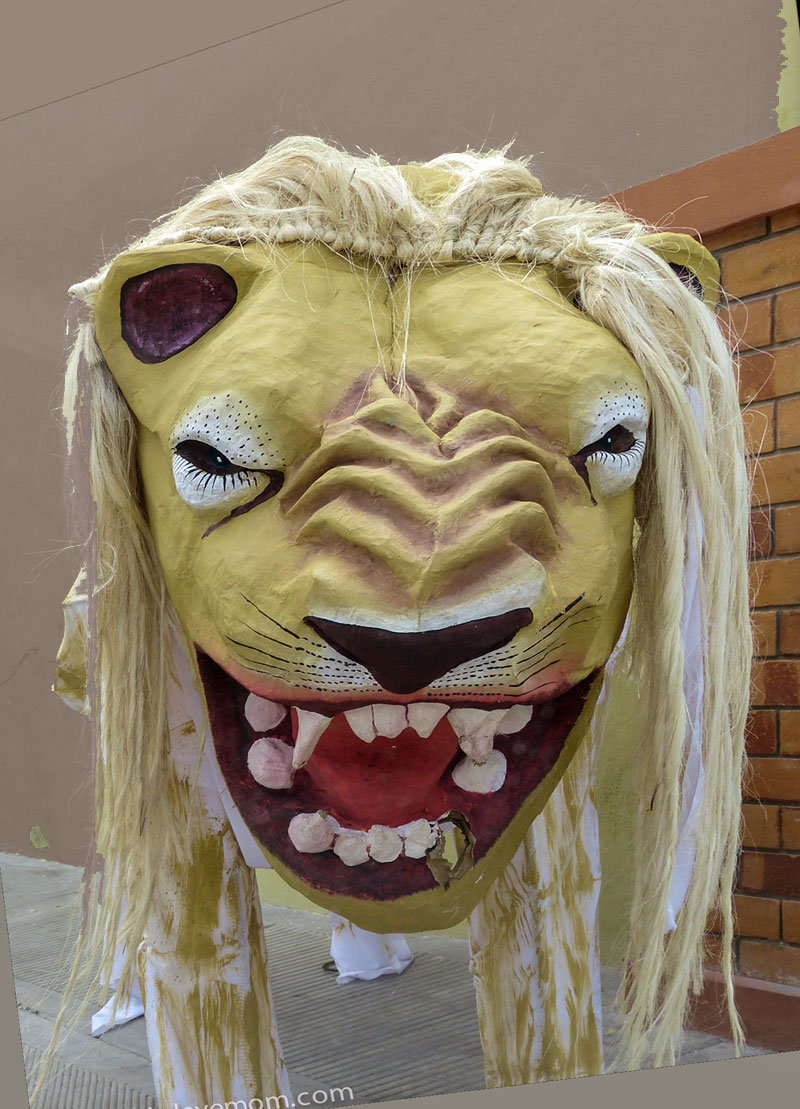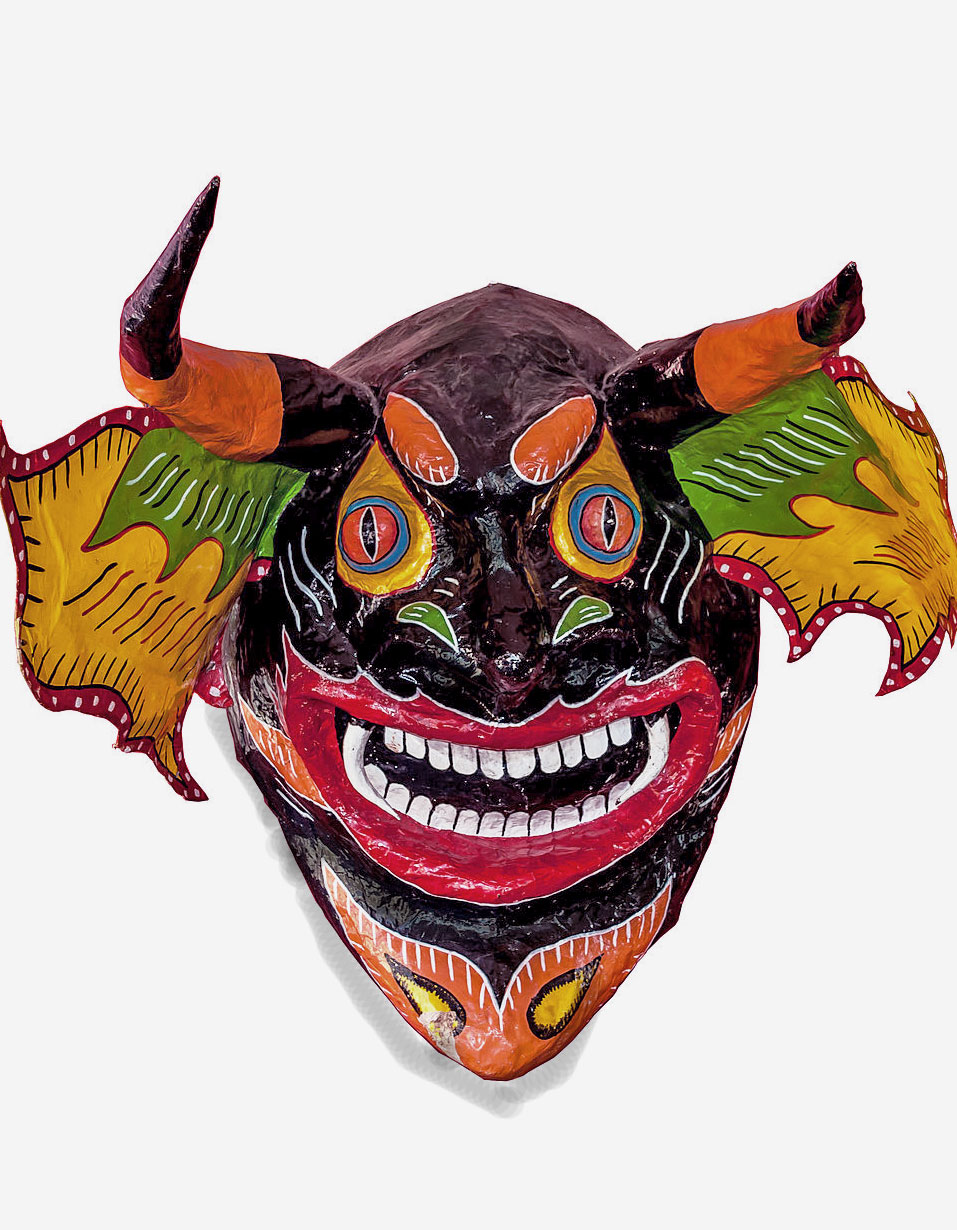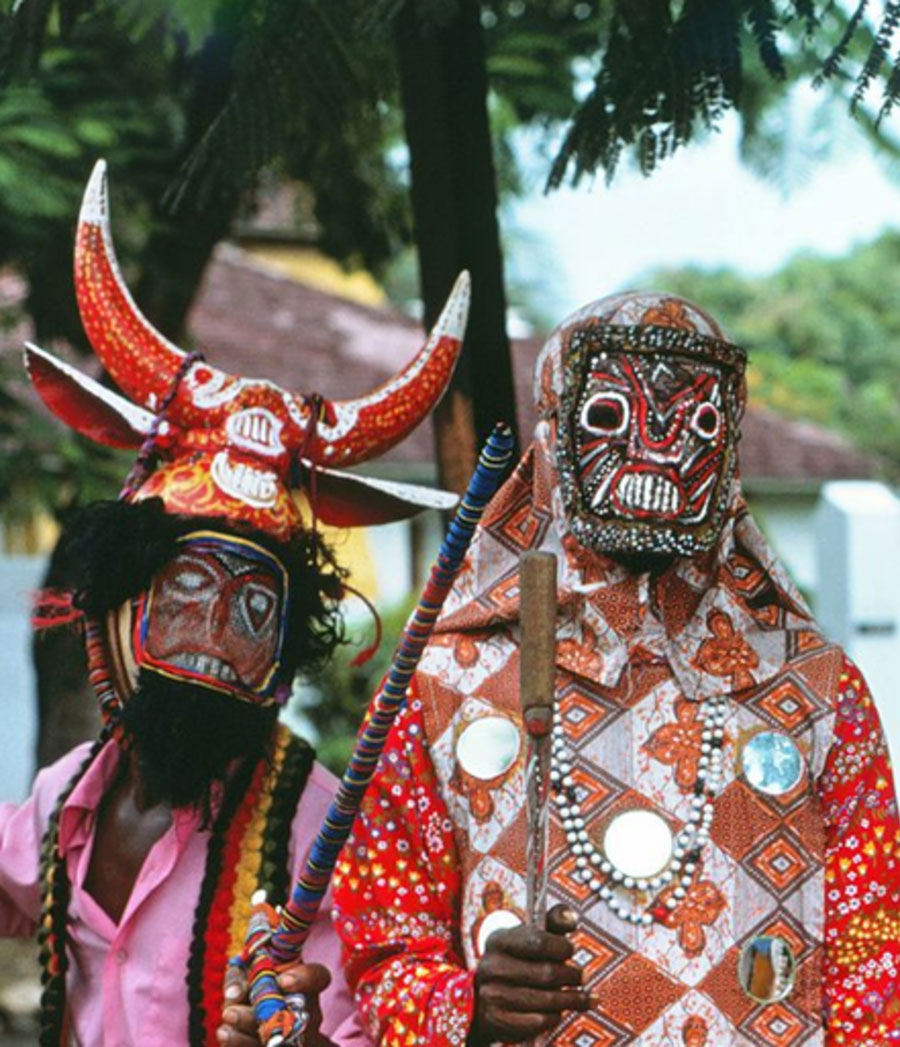Venture into the heart of the Costa Rica rainforest with us as we unveil a treasure trove of history and artistry. For the first time, we’re thrilled to present a collection of 19 authentic danced Boruca diablito masks. These aren’t just any masks; they are a testament to the rich history and revival of the Boruca mask-carving tradition. 🌳 A Revival from the Brink 🌳 In the 1970s and 80s, the art of Boruca mask carving was nearly lost. But, thanks to the indomitable spirit of Ismael Gonzalez, this ancient craft was reborn, infusing life and passion back into the Boruca community. The masks in our collection are a reflection…
-
-
Woven Indian mask from Panama
Q: Found this “mask” at a thrift shop for 99 cents. I think it’s a mask, but have no idea of origins, or what it was used for. It is small and is tightly woven and beautifully put together. Any ideas? Mickey, 1664 A: Many of the photos sent to the Mask Man are of masks found in thrift shops. I usually don’t publish them because they are poorly made fakes. Yours is one of the few that deserves being in a good collection… providing it is large enough to be worn. (Small ones are for tourists only and therefore less desirable for collecting.) Either way, yours is a beautiful…
-
Mask and costume from Dominican Republic
Q: I am a student studying my bachelor of Set and Costume Design at the Royal Central School of speech and drama, London. I am currently researching Dominican Republic Festival masks from the 1800s. I would like to make one for a play I am designing, and would it like to be as visually accurate as possible. To be incredibly specific it would be from Le Joya – by the river I believe, but to be able to find any imagery of masks from this area would be incredible. I have looked through copious research material– libraries and galleries, online, etc. It seems to be a very niche area. I…
-
Nicaraguan carnival mask with protection
Q: I just found this one and have no idea where it’s from. It may be a Latin American carnival mask. If you find a moment please look at my mask collection. I have included a URL to it. I have collected mask for a number of years and have come across several unique ones. I do however find good “tourist” masks and keep them in the collection for their uniqueness and color. Any comments would be appreciated. Vincent, 1544 A: Your thinking in the right direction. Carnival masks from Nicaragua can vary a lot, but most of them are made of firm papier mache and the eye holes are…
-
Where does this mask come from?
It comes from the Yare people of Northern Venezuela, close to the Caribbean sea. They were brought here as slaves and are of African descent, as are almost all Caribbeans. You can see this African influence in their music, dance, costumes and masks. Most Yare masks are made of papier mache and lots of colorful paint. This one is a typical parade mask from the Devils of Yare. In this folkloric festival, devotion is given to the patron saint Saint Francis of Paola, to the Blessed Sacrament and to Jesus Christ. The celebration starts Wednesday with a wake where fulías (a native music style) are played, décimas (native form of…
-
Haitian masks of wood, metal
Most Haitian masks are made of papier mache and painted. You can see some of them in the “Caribbean Category” of our archives. Ordinary people can afford some them for carnivals and other ceremonies. More expensive masks are made of steel taken from the side of oil barrels, same as the famous steel drums used by Haitian musicians. One of the masks shown here is steel. Almost all these are decorative and sold to the tourist trade. Others are carved wood and much older. Within the African Diaspora, Haitian culture is known for its strong connection to Yoruba, Congo, and other Cross river cultures which, over centuries, combined with influences…
-
Junkanoo mask from the Bahamas
This Junkanoo celebration is a distinctly Bahamian combination of colorful handmade masks, costumes, cow bells, horns, and rhythmic goat-skin drums pounding out a steady island beat. We have in our Caribbean Category a photo from Jamaica showing a different approach to Junkanoo. Separated by Cuba and miles of sea water, you can see why they are different. Like so many masks and costumes from the region, they are influenced by African artistic traditions. That is a Bahamian boy marching in a young peoples band. A lot of time went into making that costume. Could you make something like that for your kid!
-
Devil mask from northern Venezuela
Dancing Devils of Corpus Christi refers to a set of popular Venezuelan religious festivals held on Corpus Christi, celebrating the presence of Christ in the Eucharist. It generally refers to the practices of 11 brotherhoods in various regions, which include more than 5,000 people who are of African decent. (There are almost a million blacks living in Venezuela.) The Dancing Devils was recognized by UNESCO as Intangible Cultural Heritage in 2012. As you can see, Yare folk art is more like that from the Caribbean islands than anywhere else, i.e. papier mache monsters painted in bright colors. 1387
-
Puerto Rican art mask
This is a beautifully papier mache Vejigante mask that is too expensive to wear in a Ponce or San Juan carnival. It’s made for serious mask and art collectors. From an anthropological standpoint it certainly demonstrates the wonderful influence African culture had on modern Caribbean foik art. Please enlarge and look at the detail. v
-
4 Jamaican Jonkonnu dancers
John Canoe or Jonkonnu (pigeon English) has a very long tradition as a folk festival, incorporating both African and European forms. The Jonkonnu Festival is secular in nature and its performance at Christmas time is merely historical. From as early as the beginning of the 18th century masked and costumed performers have paraded the streets of Jamaica most often at Christmas time, but also at state functions, receiving money and food in return for their performances.These photos look very African to me.

